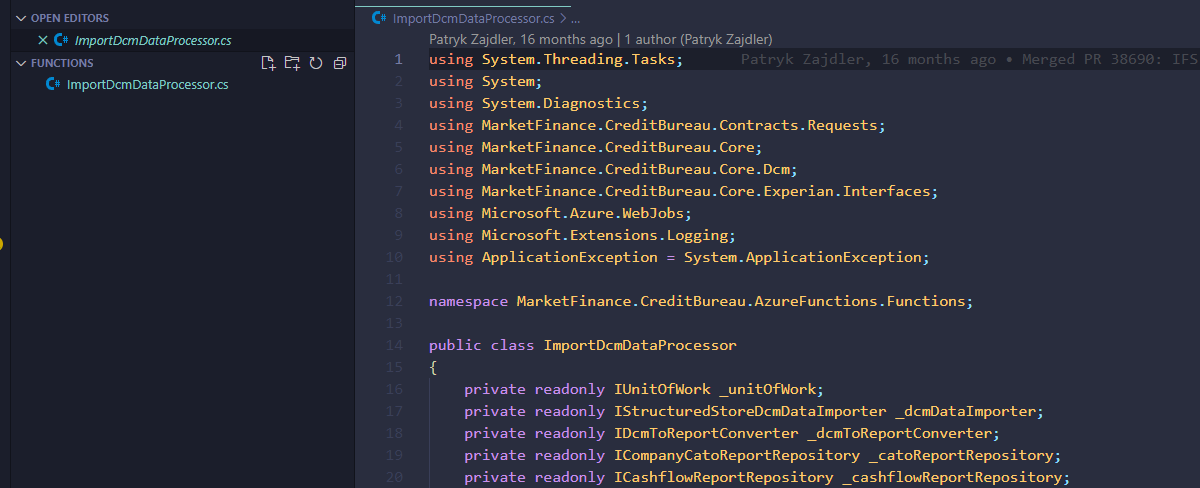The Fundamentals of Clean Code: Crafting Software Excellence
Introduction:
Clean code is not just a buzzword in the world of software development; it is a fundamental principle that can significantly impact the efficiency, readability, and maintainability of a codebase. In a rapidly evolving technological landscape, writing clean code is crucial for building robust, scalable, and sustainable software solutions. This article explores the fundamentals of clean code and why it is essential for developers to embrace this mindset.
- Readability Matters: At the core of clean code is readability. Code is read by humans far more often than it is written or executed by machines. Clean code is characterized by clarity and simplicity, making it easy for other developers (or even yourself in the future) to understand its purpose and functionality. Descriptive variable names, well-structured functions, and consistent formatting contribute to enhanced readability.
- Keep it DRY (Don’t Repeat Yourself): Duplication in code is a breeding ground for bugs and maintenance nightmares. Clean code adheres to the DRY principle, advocating for the elimination of redundancy by creating reusable components and functions. By minimizing repetition, code becomes more maintainable, and changes can be made in one place without affecting the entire codebase.
- Meaningful Names: Choosing meaningful and descriptive names for variables, functions, and classes is crucial for clean code. A well-named entity provides immediate insights into its purpose and functionality, reducing the need for comments to explain its role. A developer should not have to decipher the meaning of a variable or function by diving deep into its implementation.
- SOLID Principles: The SOLID principles (Single Responsibility, Open-Closed, Liskov Substitution, Interface Segregation, and Dependency Inversion) serve as a foundation for writing maintainable and scalable object-oriented code. These principles guide developers in creating code that is modular, flexible, and easy to extend, promoting the development of clean and efficient systems.
- Unit Testing: Clean code is testable code. Writing unit tests is an integral part of the clean code philosophy. It not only ensures that the code functions as intended but also provides a safety net for future changes and refactoring. A well-tested codebase instills confidence in developers and stakeholders alike, fostering a culture of continuous integration and deployment.
- Comments and Documentation: While clean code prioritizes self-explanatory code, there are instances where additional clarification is necessary. Comments should be used sparingly and should focus on explaining the ‘why’ rather than the ‘what.’ Documentation, both inline and external, is crucial for conveying the overarching design and architecture of the system.
- Consistent Formatting: Consistency in code formatting is not just a matter of aesthetics; it significantly contributes to readability. Adopting a consistent coding style, including indentation, spacing, and naming conventions, makes the codebase cohesive and approachable. Many modern development environments provide tools for automatically enforcing a consistent coding style.
- Refactoring: Embracing a continuous process of refactoring is essential for maintaining clean code. Refactoring involves making improvements to the existing code without altering its external behavior. Regularly reviewing and refactoring code helps eliminate technical debt, making the codebase more agile and adaptable to changing requirements.
Conclusion:
In the ever-evolving landscape of software development, clean code is not a luxury but a necessity. It is the cornerstone of building maintainable, scalable, and efficient software systems. Developers who prioritize the fundamentals of clean code contribute not only to their individual projects but also to the overall health and sustainability of the software development community. As we continue to push the boundaries of technology, the principles of clean code will remain timeless, guiding developers towards excellence in their craft.




2 Comments
Hi, this is a comment.
To get started with moderating, editing, and deleting comments, please visit the Comments screen in the dashboard.
Commenter avatars come from Gravatar.
thanks, interesting read